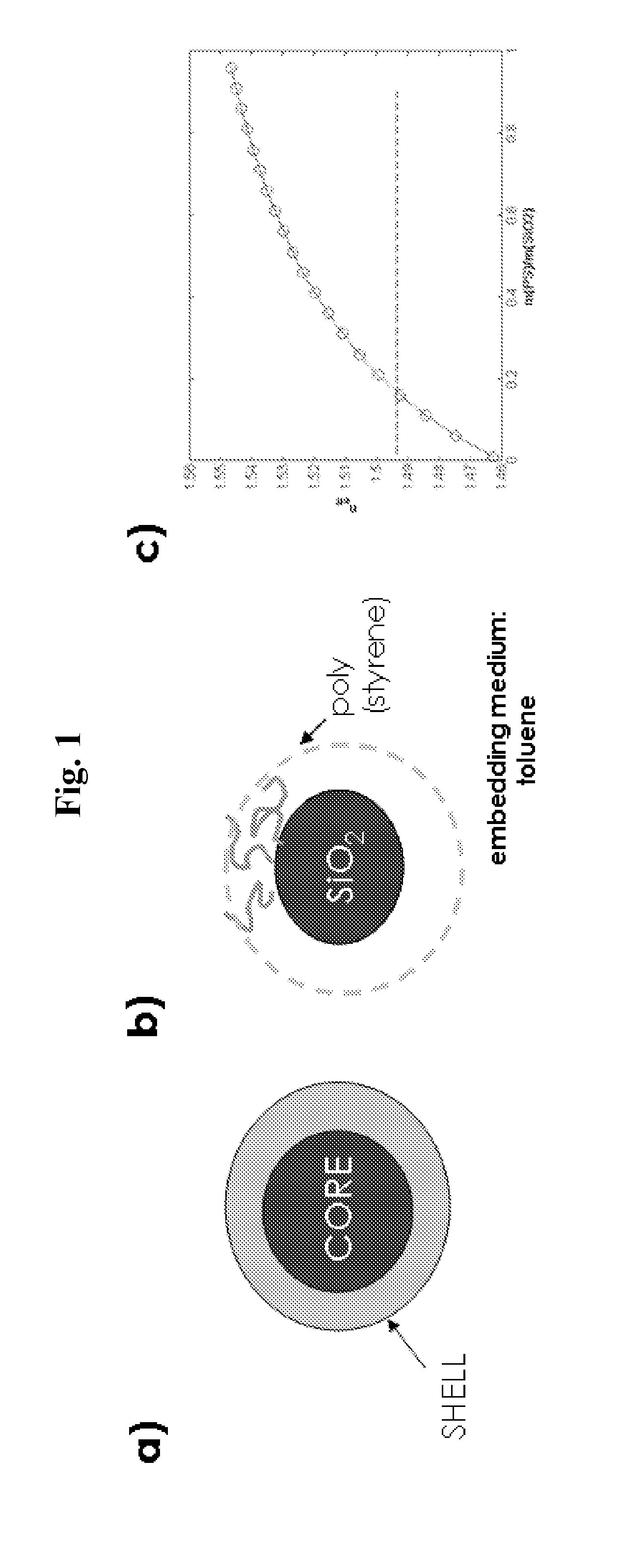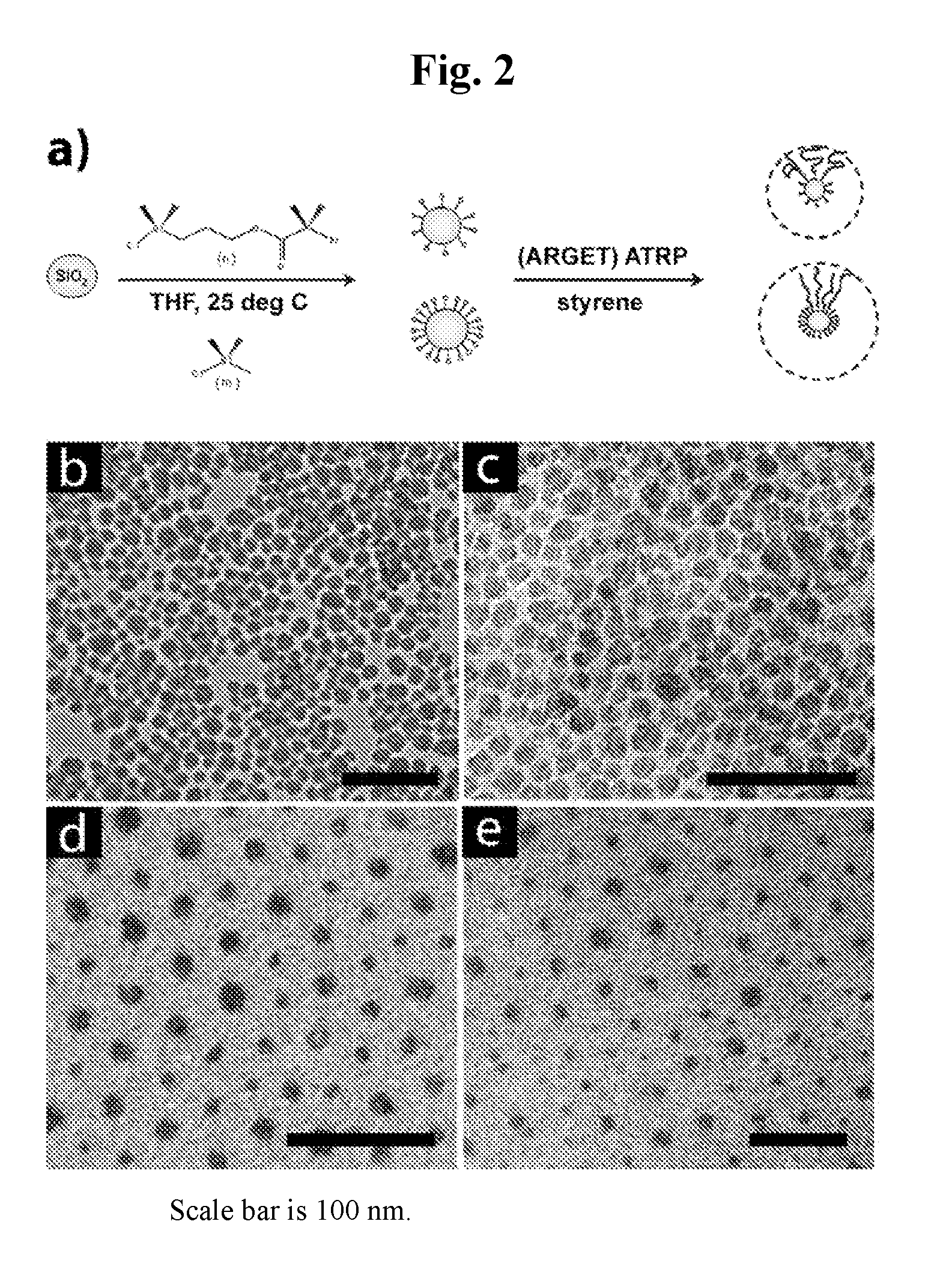Hybrid partice composite structures with reduced scattering
- Summary
- Abstract
- Description
- Claims
- Application Information
AI Technical Summary
Benefits of technology
Problems solved by technology
Method used
Image
Examples
example 1
[0081]A series of experiments were conducted wherein ATRP was applied to polymerize styrene with varying degree of polymerization DP=10, 150 and 760 for high grafting densities (σ˜0.7 chains / nm2) and DP=140 for a silica / polystyrene composite particle comprising a reduced grafting density (σ˜0.09 chains / nm2). The synthetic procedure is illustrated in FIG. 2A.
[0082]The corresponding mass ratios m(PS) / m(SiO2) of the particle samples were calculated to be 0.12 (DP10), 0.22 (DP140), 2.5 (DP150) and 7.5 (DP760), respectively. The compositional characteristics of the particle samples used in our study are summarized in Table 1.
TABLE 1Characteristics of PS@SiO2 particlesystems used in the present study.sample IDMn / (g / mol)Mw / Mnσ / nm2m(PS) / m(SiO2)DP1010201.080.710.12DP150155501.210.842.5DP760804001.320.57.5DP140142001.090.090.22
[0083]FIGS. 2B, 2C, 2D, and 2E depict electron micrographs of the respective particle monolayers deposited on carbon film revealing the close-packed hexagonal arrangeme...
PUM
| Property | Measurement | Unit |
|---|---|---|
| Size | aaaaa | aaaaa |
| Size | aaaaa | aaaaa |
| Transmittivity | aaaaa | aaaaa |
Abstract
Description
Claims
Application Information
 Login to View More
Login to View More - R&D
- Intellectual Property
- Life Sciences
- Materials
- Tech Scout
- Unparalleled Data Quality
- Higher Quality Content
- 60% Fewer Hallucinations
Browse by: Latest US Patents, China's latest patents, Technical Efficacy Thesaurus, Application Domain, Technology Topic, Popular Technical Reports.
© 2025 PatSnap. All rights reserved.Legal|Privacy policy|Modern Slavery Act Transparency Statement|Sitemap|About US| Contact US: help@patsnap.com



